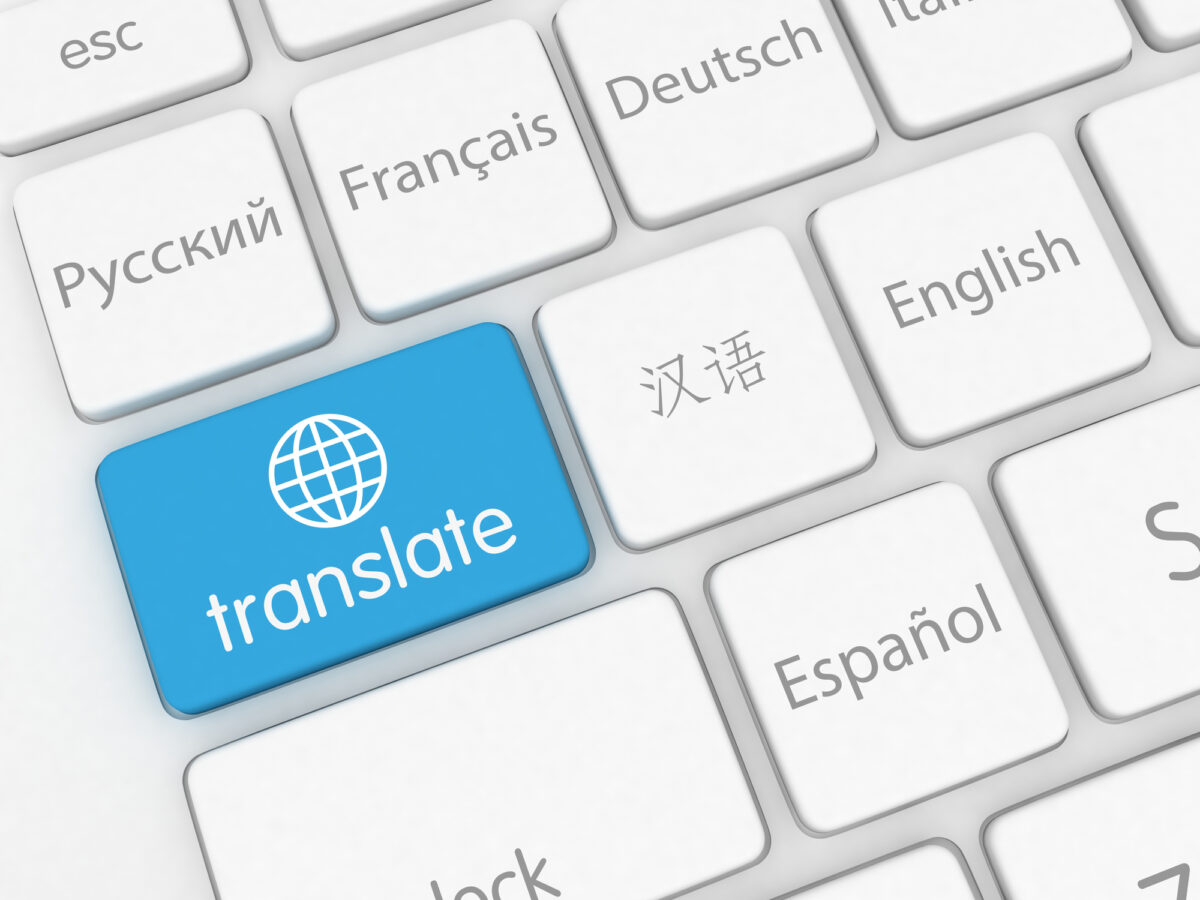Equity and Access in Translation, Part 1
2/26/24 / Catherine Rockey, PhD
One of the first aspects of equity and access that organizations may be poised to tackle is offering translations in multiple languages for their online content. It seems like an easy, obvious choice. Especially for the speakers of languages that have a large representation in your community—you want them to be able to read your website or ad. Unfortunately, many websites still rely mostly on automated translation services and plugins.

Lost In Translation
As a former Spanish teacher, I have fought my battles against Google translate. I was never a supporter of the abstinence approach, though. I wanted my students to be able to use it as one tool in their toolbox, to use it with caution, and to always check with other sources for accuracy and precision. I would advise them which classes of words/phrases translate well (e.g., nouns, adjectives, and prepositions) and which are best to avoid (e.g., idiomatic expressions, verbs, and specialized terminology). I would urge them not to plug in more than a short phrase at a time—the longer the phrase the more likely the sentence structure will trip up the translator.
Even if you are careful and follow certain guidelines, the broader issue is often that translators tend to take a word-by-word approach and translate literally. For example, you want to advertise a townhall meeting in Spanish, so you plug in the word “townhall.” A translator will give you the word for a physical townhall building. Only in English do we use this word to also mean a public meeting.
Why does it really matter, though? What’s the big deal if the translation is a little wonky? For the very same reasoning of offering the translated content in the first place: equity and access. This importance is compounded when considering 1) content that is inherently difficult to comprehend, such as writing related to legal and medical processes, or 2) topics that are sensitive in nature, such as seeking treatment for mental health or substance use.
There are multiple other concepts that relate to the idea of equity and access in communication, such as:
- Readability: ensuring that your content is at most a 7-8th grade reading level for a general audience, preferably a 6th grade reading level to ensure further access to people with lower literacy.
- Lexical coverage: the theory that 95-98% of words in a given text need to be known by the reader for that text to be considered comprehensible.
- The Right to Plain Language: everyone has the right to be communicated to in “language that is clear and easy to understand.”

Plain Language
But what does plain language mean in terms of equity and access in the context of multilingual communication? The Plain Writing Act of 2010 defines plain language as “writing that is clear, concise, well-organized, and follows other best practices appropriate to the subject or field and intended audience” (plainlanguage.gov). To ensure your text is comprehensible and fulfilling the right to plain language for your readers, checklists and guidelines can be found on the plainlanguage.gov website, along with many other online resources.
Some general guidelines for plain language include:
- Is this at a 6th grade reading level (for general audience)?
- Is the sentence structure simple and easy to follow?
- Are the words and phrases simple, everyday words that the average reader is likely to know?
- Have you replaced any jargon or specialized language with language more appropriate to the audience?
While much of the literature on the Right to Plain Language centers on English texts, additional considerations for texts that have been translated from English into another language should be kept in mind. These might include:
- How was the translation accomplished?
- If this was generated with an automated translator, has a human translator proofread it?
- Is it localized to the speech community it is trying to reach, considering cultural and dialectal differences?
- Are key terms clearly defined and/or supported with context and examples?
Regarding the points about jargon, word choice, and key terminology, sometimes there is a specialized term that an organization has decided is important to incorporate into their public facing communications (e.g., the term “behavioral health”). In this case, even before translation it is paramount to provide a clear definition as well as examples and alternative phrases that can clarify the term’s meaning and that resonate with the reader. This is of equal importance for all terminology translated from English into other languages, keeping in mind the other above considerations, such as dialectal differences and the need for human translation.
Is it plain enough?
With all word choice in a given text, the plain language guidelines state to “use normal, everyday words that readers know”; however, we cannot take for granted what vocabulary the reader may or may not be familiar with. The primary way to truly assess whether the words/phrases/terminology are known by the reader is to ask them (or more precisely, ask for feedback from a sample of your intended audience.)
“Communication that flows one way from the creators of the comminication to the users of the communication is not sufficient (even if plain language guidelines are followed) because what constitues plain language (clear and easy to understand) must be defined by the user.” –Moran, 2021
So, what can we do to help communication flow in the opposite direction from user back to creators and get that crucial feedback? Research is one way! Through interviews, focus groups or questionnaires, you can elicit feedback and assess vocabulary knowledge/comprehension of the texts at hand. Both quantitative and qualitative data collection methods may be used to facilitate plain language evaluation of public facing messaging and content. Continue to Part 2 of our blog series, where we discuss important research considerations and implications for helping ensure the right to plain language is fulfilled, especially in translated texts.
